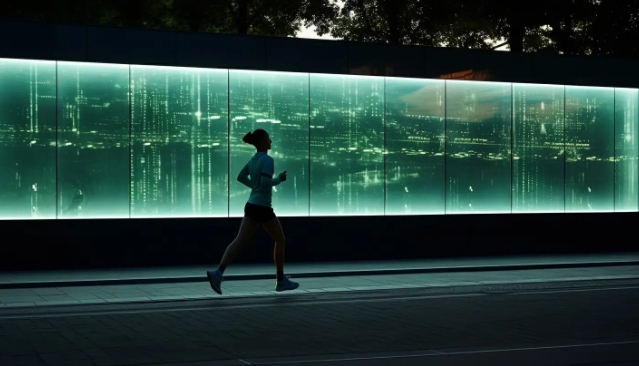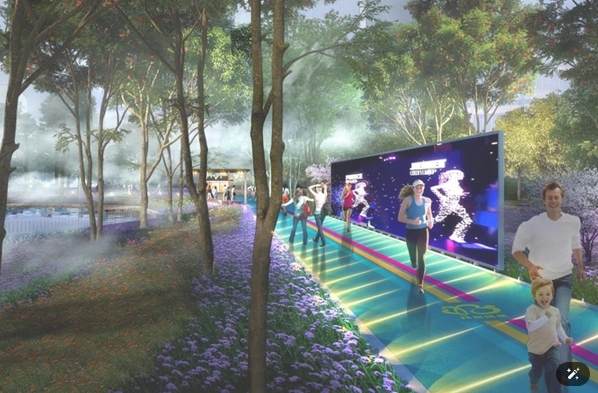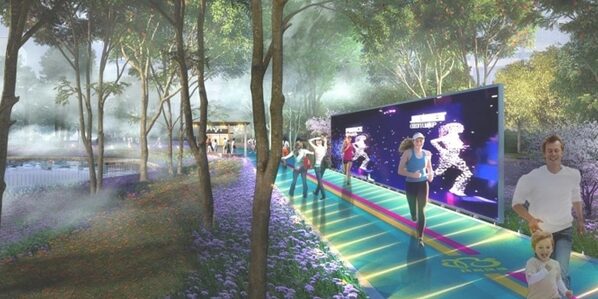Introduction
In the realm of multimedia exhibitions and interactive displays, LiDAR-enhanced interactive projection systems, also known as radar multi-touch systems, are becoming increasingly popular. These systems offer a unique and engaging way to interact with visual content, leveraging advanced infrared sensing technology. If you’re considering integrating such a system into your project, understanding its features, installation conditions, and setup requirements is crucial. This guide provides a detailed overview to help you make the most of your LiDAR interactive projection system.

What is a LiDAR-Enhanced Interactive Projection System?
LiDAR (Light Detection and Ranging) technology utilizes laser light to detect and measure distances, creating precise and detailed spatial data. In interactive projection systems, LiDAR sensors capture the movements of users, which are then analyzed and integrated into the interactive display. This allows for multi-point interaction on various surfaces, such as walls, floors, and irregular planes, without the need for physical touch.
Key Features of LiDAR-Enhanced Interactive Projection Systems
1. Independence from Display Systems
Unlike traditional multi-touch systems that rely on specific display surfaces, LiDAR interactive systems operate independently. This flexibility allows them to be used in a wide range of environments, from exhibition halls to museums, without being constrained by traditional display setups.
2. No Dependence on Physical Surfaces
Utilizing advanced infrared sensing technology, LiDAR systems create invisible multi-touch walls in mid-air. This eliminates the need for a physical touch surface, making interactions feel more natural and intuitive.
3. Wide Touch Range
LiDAR systems are available in various models with different touch range radii, including 4 meters, 10 meters, 20 meters, and 30 meters. Customizable options are also available to suit specific needs.
4. Multiple Touch Points
These systems support multi-touch functionality, allowing multiple users to interact with the system simultaneously from different positions. This capability makes it ideal for large-scale interactive projects.
5. Strong Adaptability
LiDAR interactive systems can function on irregular surfaces and are resistant to light interference. This adaptability provides a significant advantage over traditional touchscreens, which require a consistent and flat touch surface.
6. Compact and Easy to Install
The system’s compact design (with sensors measuring around 7x7x8 cm) makes installation straightforward, even in complex environments. This small size allows for flexibility in mounting options and locations.

Installation Conditions for LiDAR Interactive Projection Systems
1. Projection Distance
For optimal performance, projectors should be mounted approximately 2.8 meters above the ground, facing the projection medium. This height ensures clear and accurate image display.
2. Projection Environment
The ideal background color for the projection area is white or silver-white. The size of the projection area is flexible and can be adjusted according to the requirements of the installation.
3. Surface Requirements
The projection medium should be relatively flat and even to achieve precise touch effects. For irregular surfaces, ensure that the area near the LiDAR sensors is free from obstructions.
4. Surface Tilt
While the display surface can be inclined, it must remain on a horizontal plane without significant irregularities or curvature.
5. Power Supply
LiDAR devices typically require a 12V, 2A power adapter. To prevent overheating, it is advisable to disconnect the power supply after daily use.
Installation Characteristics of LiDAR Interactive Projection Systems
Flexibility in Installation
LiDAR systems offer significant flexibility in installation. They can be mounted:
- Above or below a wall or LCD screen.
- On the floor, whether it is close to or away from a wall.
- In mid-air, as long as the LiDAR radius is appropriately considered.
Ease of Setup
Installing and calibrating a LiDAR system is relatively quick and straightforward, often taking just one to two hours without considering the content specifics.
Conclusion
LiDAR-enhanced interactive projection systems offer a powerful and versatile solution for creating engaging multimedia experiences. By understanding their features, installation requirements, and setup flexibility, you can effectively integrate these systems into various exhibition and interactive environments. If you’re interested in exploring this technology further, CPJ ROBOT, a leading manufacturer of POE LiDAR systems, provides free radar testing software and expert consultation. Don’t hesitate to reach out and transform your interactive displays with cutting-edge LiDAR technology.
For further inquiries and detailed consultations, CPJ ROBOT is available to assist with your LiDAR interactive projection needs. Explore the possibilities and elevate your multimedia experiences today!







